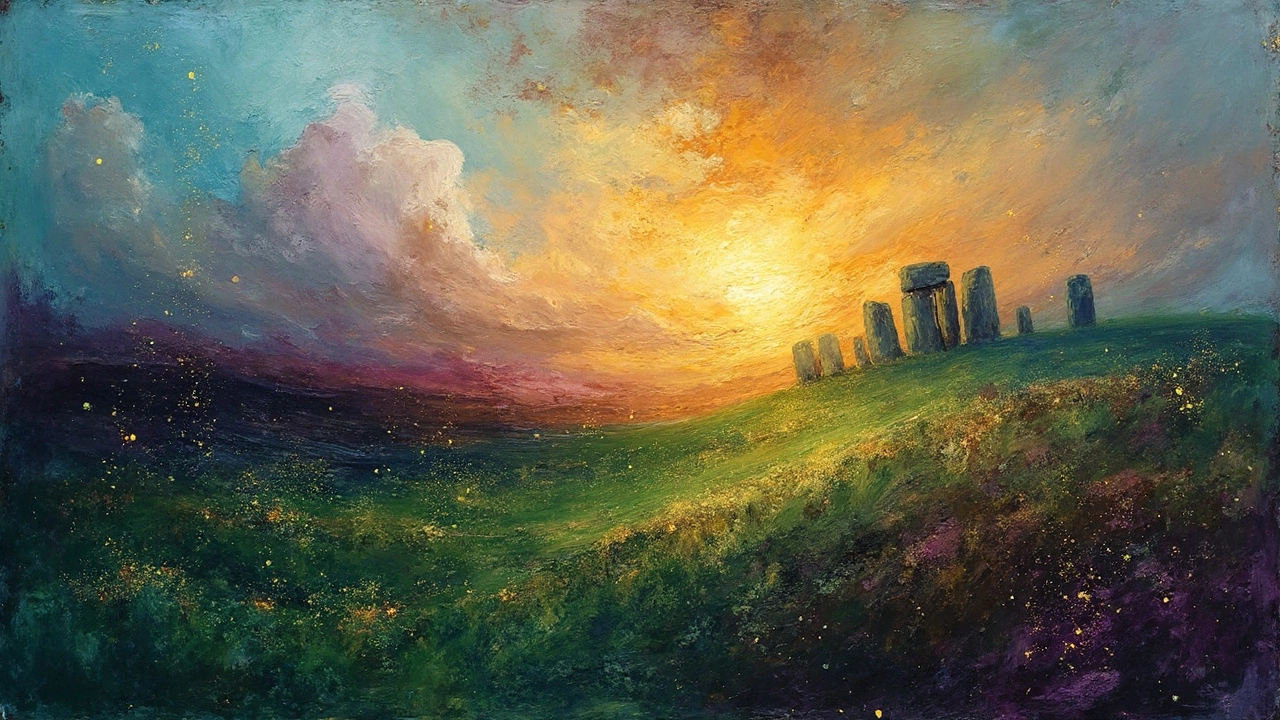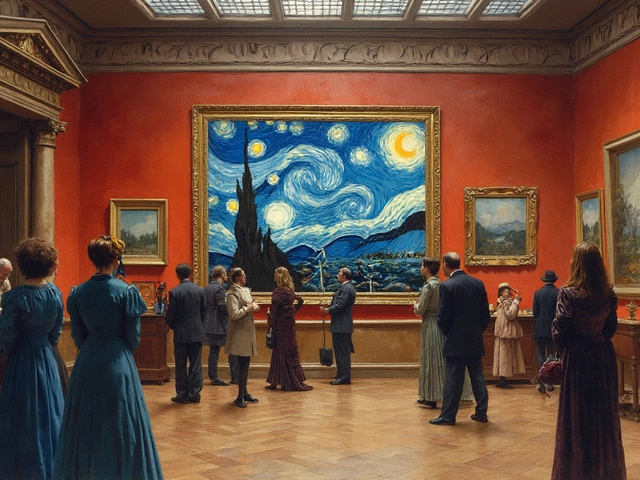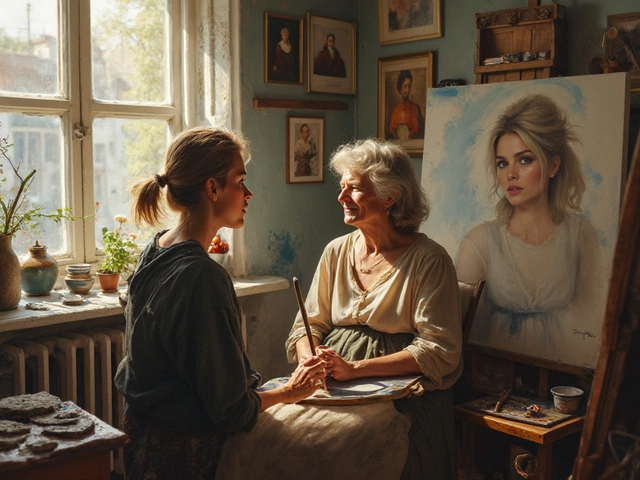Abstract art—what's really going on there? It's like looking at a puzzle without all the pieces fitting together neatly. But maybe that's the point. Abstract art doesn't want to spoon-feed you with a clear story; instead, it invites you to feel your way through it.
Think about it as a conversation starter. Walk into a room with a piece of abstract art on the wall, and everyone might have a different take or feeling about it. Maybe it's frustration, curiosity, or even a sense of calm. The truth is, abstract art is more about what you bring to it than what it gives to you. With its bold colors and unusual forms, abstract art is designed to engage your senses and spark your imagination.
Feeling a bit confused is actually part of the journey. The beauty of abstract art is that there's no definitive answer or message. It's not tied to reality like a traditional landscape or portrait. Instead, it's about creating a vibe or setting a mood. Dive into the colors and shapes—how do they make you feel? That's the real secret hidden in abstract art: emotion and interpretation. It's a personal experience, and that's what makes it so exciting. So the next time you stand in front of an abstract piece, let go of the notion of finding "the message"—just see where it takes you.
- The Essence of Abstract Art
- Emotional and Personal Interpretations
- The Role of Colors and Shapes
- Famous Abstract Artists and Their Messages
- How to Approach Abstract Art
The Essence of Abstract Art
So, what's the core idea behind abstract art? Well, it's all about breaking away from the traditional way of representing the world. You won't find pictures of recognizable objects or straightforward scenes. Instead, it's like stepping into a realm where imagination is the only limit.
As abstract painter Wassily Kandinsky once said,
“Color is a power which directly influences the soul.”This quote encapsulates the essence of abstract art perfectly. It's less about depicting reality, more about delving into emotions through colors and shapes.
Let's think of it this way: if a landscape painting is like reading a book, abstract art is akin to feeling a mood. It goes beyond what's visible, reaching into the invisible threads that make up our feelings and thoughts. Allowing viewers to step into their interpretation shows the strength of interpretation in abstract art.
The Birth of Abstract Movements
Abstract art came to life as artists started questioning the constraints of traditional styles. Pioneers like Piet Mondrian and Kazimir Malevich besides Kandinsky, used lines, colors, and forms as their language. They wanted to provoke thought and emotion in ways that words sometimes couldn’t.
The early 20th century was a hotbed for these ideas, with the post-war period fostering immense creativity. Simplification and abstraction were responses to the chaos of the world, offering viewers a fresh lens to experience art.
Key Ingredients of Abstract Art
- Colors: They're not just to fill in space; they're meant to make you feel something—be it calmness or excitement.
- Shapes and Forms: Non-representational forms challenge you to look at them differently. You're not just seeing; you're experiencing.
- Interpretation: It's personal. There’s no right or wrong way to feel about a piece, which is why each person’s connection can be so unique.
Ultimately, the message of abstract art is about pushing boundaries and dissolving the conventional backdrops of art to form something introspective and personal. With every piece, you're invited into a dialogue without words, a chance to see beyond the obvious.
Emotional and Personal Interpretations
When it comes to abstract art, everyone seems to see something different, and that's where the magic lies. Unlike art that depicts clear images or scenes, abstract pieces are more like mirrors reflecting the inner workings of one's mind and emotions. You might walk into a gallery and see a painting that looks like a chaotic jumble of colors and lines, but somehow, it reminds you of your childhood beach trips or a stormy night. That's the power of personal interpretation.
Emotions are a massive part of interpreting abstract art; they're like the secret ingredient nobody talks about. A lot of abstract artists aim to stir your feelings rather than tell you a precise message. Take, for example, Mark Rothko, known for his large blocks of color. Stand in front of one of his paintings, and the sheer size and intensity of the colors can evoke feelings of awe, introspection, or even sadness. Rothko's work teaches us that the interaction between colors can communicate deeply embedded emotions without needing a single identifiable object.
But how do you go about understanding these feelings? There's a straightforward way to start: trust your gut. Let your initial emotional reaction guide you. Ask yourself, what emotions does this art evoke in you? Is it comfort? Chaos? Serenity? Write it down if you like; it's all part of your personal journey with the art.
Tips for Interpreting Emotion in Abstract Art
- Let Go of the Literal: Try not to look for recognizable objects. Focus instead on how the colors and forms make you feel.
- Take Your Time: Don't rush. Sit with the art for a while and see how your feelings evolve.
- Open Dialogue: Discuss your impressions with a friend. You might be surprised by different perspectives—sometimes, fresh insights come from these conversations.
In a world often obsessed with clear-cut answers, abstract art offers a refreshing dose of subjectivity. This style thrives on personal interpretation, making the viewer an integral part of the artistic experience. So next time you gaze at an abstract piece, remember: it's not about “getting it right” but about exploring and embracing your emotional landscape in the presence of art.
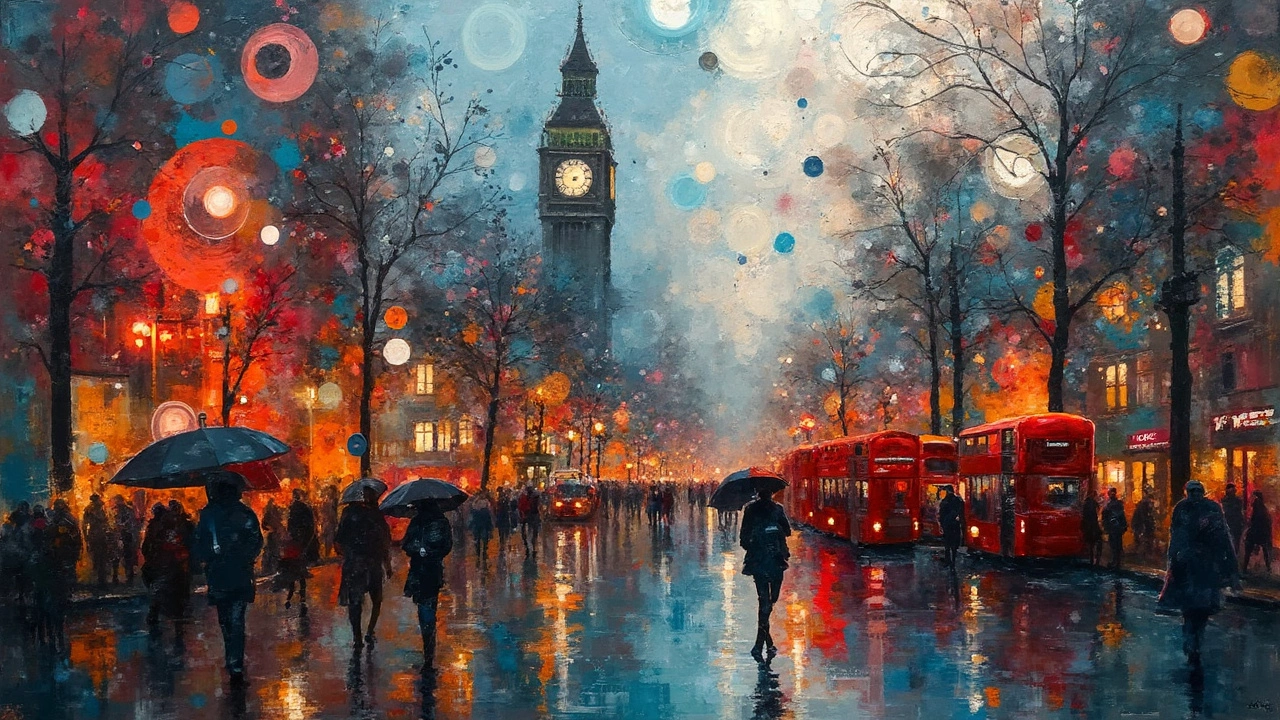
The Role of Colors and Shapes
Colors and shapes are like the building blocks of abstract art. They might not tell a story directly, but they sure have a way of hitting you right in the feels. Think about it: a splash of red can make things feel intense or even a bit angry, while blues might calm you down.
Colors: The Emotional Trigger
Artists often use colors to express emotions or moods that words can't quite capture. For example, painters like Mark Rothko used large blocks of color to provoke strong feelings. Want to feel a warm embrace? Brown and earth tones might do that. Need some energy? Bright yellow hits the spot.
And it's not just personal feeling; color theory backs this up. Warm hues like red, orange, or yellow are known to evoke excitement or warmth, while cool colors like blue and green tend to relax or soothe.
Shapes: The Mind's Playground
If colors play with your emotions, shapes toy with your thoughts. Abstract artists like Wassily Kandinsky believed shapes had spiritual significance. Whether it's a chaotic swirl or well-ordered lines, shapes guide us through the maze of abstract art.
Circular shapes? They might signify unity or harmony. Jagged, sharp edges? Expect to feel a sense of disruption or tension.
Making Sense of the Mix
When you see an abstract piece, ask yourself: How do the colors and shapes interact? Do they clash, or do they dance together? These elements work like a symphony, each part influencing the others, ultimately creating a complex web of emotions and thoughts.
Intriguingly, researchers have found that certain combinations of colors and shapes in modern art can evoke similar reactions among people. A study found that viewers consistently described Jagged, warm-colored compositions as aggressive while softer, cooler palettes were linked to feelings of tranquility.
So next time you're staring at an abstract piece and wondering what's going on, take a closer look at the colors and shapes. They’re not just there to look pretty; they’re doing the talking!
Famous Abstract Artists and Their Messages
When we talk about abstract art, a few trailblazers always pop into mind. These artists didn't just create art—they made statements that changed the course of art history. Let's check out what they were trying to say through their abstract masterpieces.
Wassily Kandinsky
Kandinsky, often called the 'father of abstract art', was known for his vibrant colors and mystical shapes. He believed in the spiritual power of art and thought it could express profound messages. Kandinsky once said,
"Color is a power which directly influences the soul."By mixing colors and forms, he aimed to paint music, making his viewers 'hear' the art through their eyes.
Piet Mondrian
Mondrian took a different path with his structured grids and primary colors. He was all about balance and harmony, representing his search for universal beauty. His art wasn't random at all—it was meant to show that simplicity can be beautiful. Mondrian challenged viewers to find beauty in the basics, making art an experience of finding tranquility in simplicity.
Jackson Pollock
Pollock brought chaos to the canvas with his famous drip paintings. His style, known as 'action painting', was more about the process than the final piece. It was rebellious, raw, and full of energy. Pollock allowed viewers to feel the freedom of movement and the unpredictable nature of creativity. His work shouts to embrace chaos and find beauty in the unexpected.
Mark Rothko
Rothko, a master of color fields, offered a different kind of emotional experience. His large color blocks are meant to envelop you, inviting you to look beyond the surface into deeper emotional layers. He aimed to provoke a spiritual experience, connecting viewers to their inner selves. Rothko said, "Art to me is an anecdote of the spirit." His art wasn't just seen but felt, touching on the emotions words couldn't capture.
Each of these artists used abstract art to communicate messages that weren't confined by tradition, opening windows to new forms of expression. So next time you see one of their works, remember there's more than meets the eye; it's more like feeling a conversation—without words.
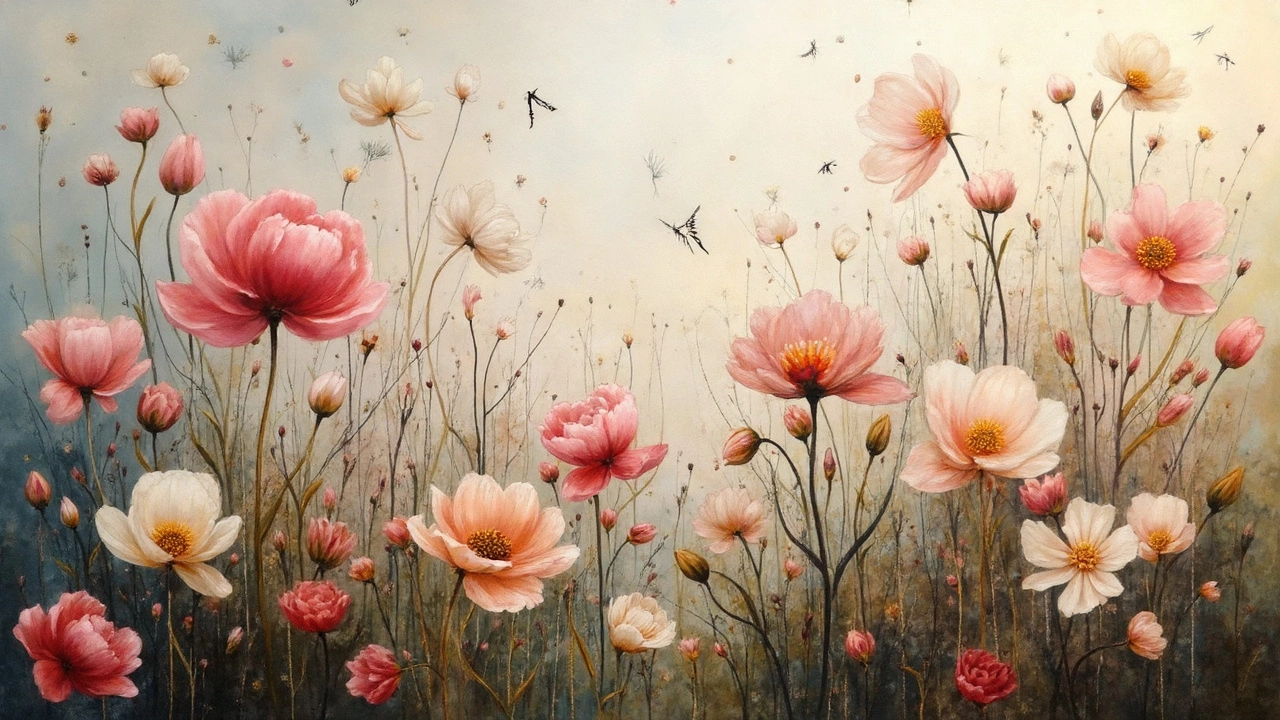
How to Approach Abstract Art
Standing in front of a piece of abstract art without a clue? You're not alone. It can be intimidating, but here's how you can approach it with a fresh perspective.
1. Let Go of Expectations
First things first, don't expect to "get it." Abstract art is like a conversation where words aren't always necessary. It’s not about deciphering a hidden code; it's about how it makes you feel.
2. Observe Without Judgement
Take a step back and just observe. Look at the colors, the shapes, and the composition. What emotions do they evoke? Remember, there are no wrong feelings here.
3. Connect Emotionally
This type of art isn't trying to depict reality—it’s inviting you to connect on a deeper emotional level. Mark Rothko, a notable abstract artist, once said,
“The people who weep before my pictures are having the same religious experience I had when I painted them.”Let yourself feel freely.
4. Ask Questions
Engage with the piece by asking yourself questions like, "What do I see? How does this make me feel?" These reflections can help you understand your personal reaction to the art.
5. Learn About the Artist
Understanding the background and techniques of famous abstract artists can provide valuable context. Did you know Wassily Kandinsky believed that colors and shapes had a spiritual power? A bit of history can enrich your experience.
Pro Tip: Art Labels
Don’t skip the labels or descriptions next to the artwork. They often provide insights into what the artist was thinking, which might resonate with or challenge your own interpretations.
Approaching modern art isn’t about becoming an instant expert. It's about opening up to new experiences and letting go of the need for a clear message. So, the next time you find yourself puzzling over an abstract piece, breathe easy and just enjoy the ride!
